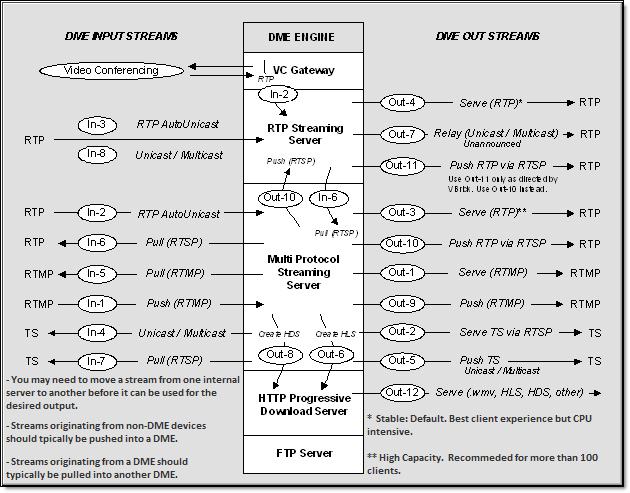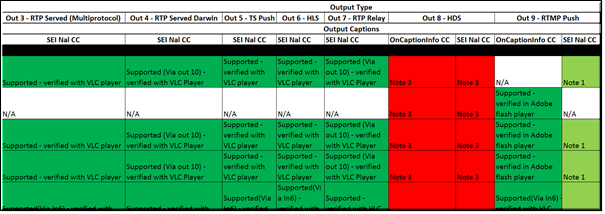Configure a DME Stream
Input and Output DME Streams
The diagram below shows the most common input and output streams supported by the DME.
The
DME Input Streams shown on the left in the diagram are live inputs from a VBrick encoder or streams from another live source—these streams can be inputs to either the RTP server or to the Multi Protocol server in the DME.
The
DME Output Streams on the right may include live streams as well as stored streams from any of the three (RTP, Multi Protocol, HTTP) onboard VOD servers. Live output streams are reflected from the RTP server or the Multi Protocol server.
For an important conceptual overview of the DME, please read the topic,
Plan for your DME Deployment.
For both Input and Output cases the numbering reflects the general priority of the various streams. For example, all factors being equal, RTMP push in (In-1) is the preferred method for delivering streams into the DME.
Alternate mechanisms may be required, however, based on a number of factors:
1. Ability of the source to deliver a stream by a given protocol.
2. Ability of the firewalls to manage delivery of the stream via the given protocol.
3. Specific requirements of the stream. Prominent examples of these requirements are:
○Closed captioning which cannot be transported via RTMP within the VBrick ecosystem.
○KLV metadata which can only be transported via Transport Stream in the VBrick ecosystem.
| Tip: Click an input or output method on the image map below (e.g. In-8 or Out-3)  to view a step-by-step description of how to configure that method. |
| Note: The VBrick H.264 Appliance Admin Guide has complete configuration details for the H.264 encoder. Please refer to this document when configuring the DME. This document is found on the VBrick support Website. |
New in DME v3.6 is Adobe Flash Multicast. It is provided as an output from the multi-protocol server. For this diagram, this would be considered Out-13,
Flash Multicast.
A spreadsheet of DME input/output stream closed caption support may be downloaded
here.

See Also:

